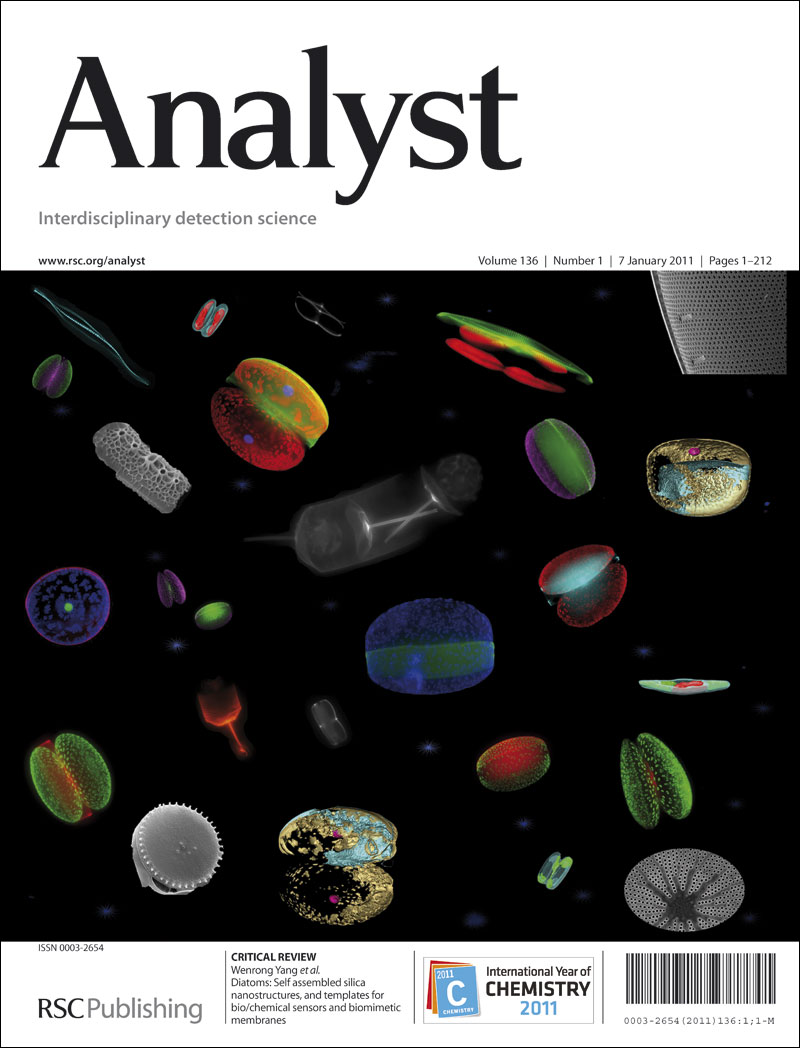hMLH1启动子甲基化鉴定的mPCR/SERS分析
IF 3.3
3区 化学
Q2 CHEMISTRY, ANALYTICAL
引用次数: 0
摘要
基因特异性DNA甲基化与各种癌症的进展有关。因此,准确地识别这种表观遗传改变是非常有趣的。在这项研究中,我们特别关注使用表面增强拉曼散射(SERS)来检测癌细胞中发现的hMLH1基因启动子区域的甲基化。通过甲基化特异性PCR (methyl- specific PCR, mPCR)扩增了来自两种不同的结直肠癌细胞系SW48和SW480的启动子片段,分别鉴定为高甲基化和非甲基化。这产生了两种不同类型的扩增物,其中正向引物用完全不同的5'悬垂序列标记,而反向引物用生物素标记。这使得它们可以与甲基化特异性纳米标签(mSERS)或非甲基化特异性纳米标签(umSERS)特异性结合,然后通过链霉亲和素磁珠(SMB)富集。这导致形成一个纳米标签-扩增子- smb复合物,可以很容易地从未结合的分子中分离出来。最后,对复合物进行SERS分析,得出与mSERS和umSERS纳米标签相关的特定光谱曲线,表明启动子的甲基化状态。该方法检测DNA甲基化的检出限(LOD)为3.93%,特异性高。因此,我们相信所提出的分析方法可以在任何DNA样品中找到更广泛的甲基化分析应用。本文章由计算机程序翻译,如有差异,请以英文原文为准。
mPCR/SERS assay for hMLH1 promoter methylation identification
Gene-specific DNA methylation is associated with the progression of various cancers. Thus accurate identification of this epigenetic alteration is of great interest. In this study, we particularly focused on the use of surface-enhanced Raman scattering (SERS) for detecting methylation in the promoter region of the hMLH1 gene found in cancer cells. A promoter segment from two different colorectal cancer cell lines, SW48 and SW480 identified as hypermethylated and unmethylated respectively, were amplified by methylation-specific PCR (mPCR). This produced two different types of amplificons with specific primers where the forward primer was labelled with completely different 5' overhang sequences, and the reverse primer was labelled with biotin. This allowed them to bind specifically with either a methylation-specific nanotag (mSERS) or an unmethylation-specific nanotag (umSERS), followed by enrichment by streptavidin magnetic beads (SMB). This resulted in the formation of a nanotag-amplicon-SMB complex that could be easily isolated from the unbound molecules. Finally, SERS analysis of the complex produced specific spectral profiles related to mSERS and umSERS nanotags, indicating the methylation status of the promoters. The mPCR/SERS assay demonstrated a limit of detection (LOD) of 3.93% for sensing DNA methylation with high specificity. Thus we believe the proposed assay can find more broad applications for methylation analysis in any DNA samples.
求助全文
通过发布文献求助,成功后即可免费获取论文全文。
去求助
来源期刊

Analyst
化学-分析化学
CiteScore
7.80
自引率
4.80%
发文量
636
审稿时长
1.9 months
期刊介绍:
"Analyst" journal is the home of premier fundamental discoveries, inventions and applications in the analytical and bioanalytical sciences.
 求助内容:
求助内容: 应助结果提醒方式:
应助结果提醒方式:


